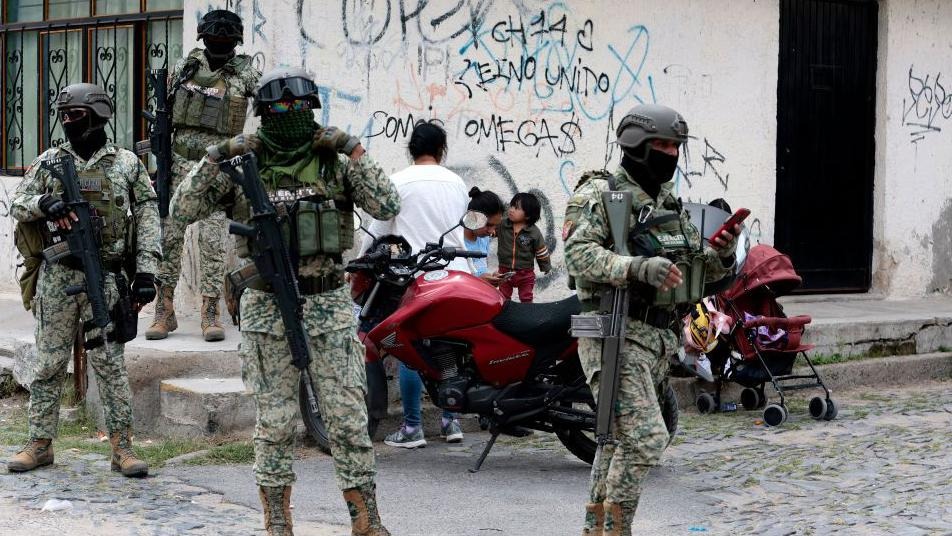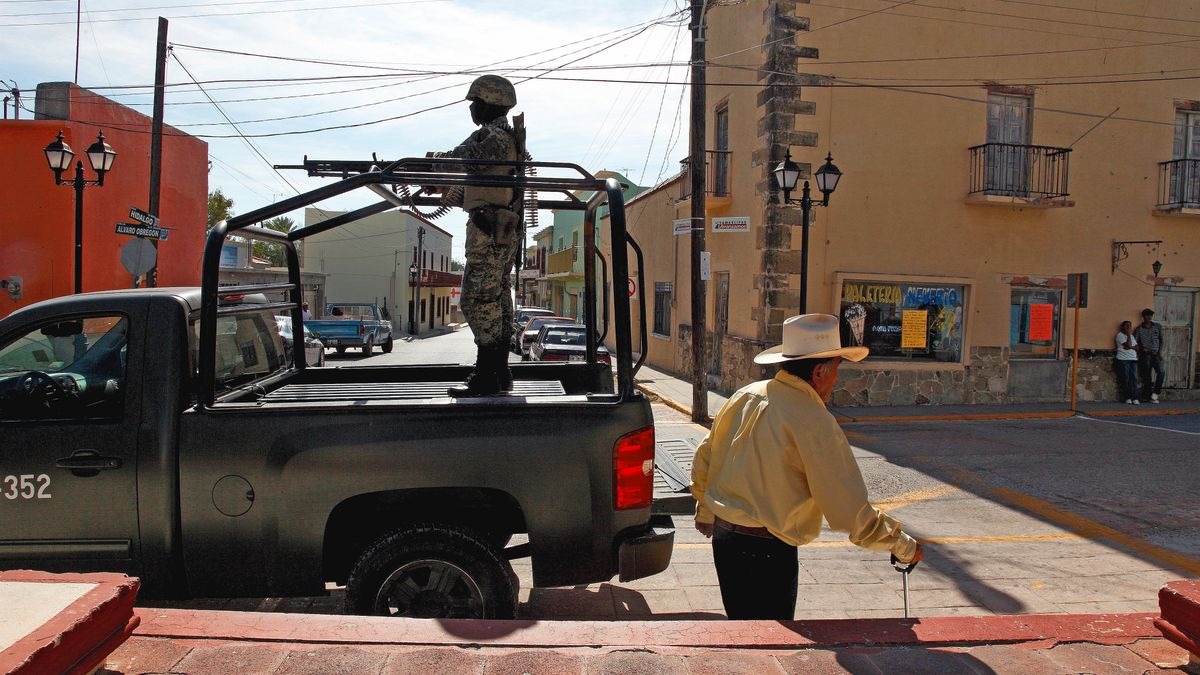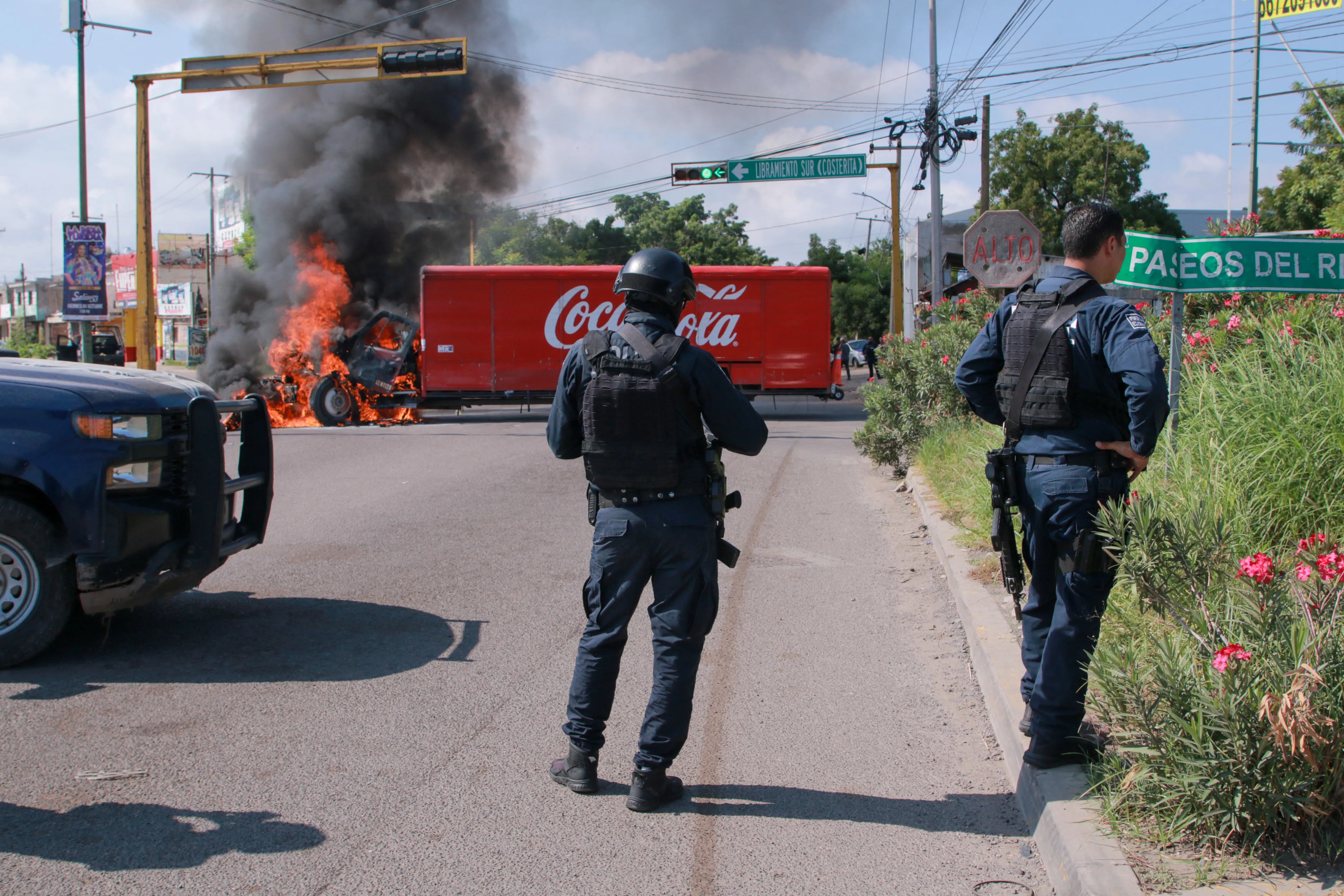Cartel savagery in Mexico is a multifaceted crisis that has evolved over decades. At its core, this savagery is defined by brutal violence, systematic corruption, and expansive criminal networks that thrive on the illicit drug trade. The press release from the U.S. Department of Justice detailing the sentencing of Edgar Fabian Villasenor-Garcia—an armed member of the Cártel de Jalisco Nueva Generación (CJNG)—provides a concrete example of how deeply embedded these criminal operations are in the region. Villasenor-Garcia’s conviction for trafficking hundreds of kilos of cocaine and methamphetamine highlights not only the transnational nature of the drug trade but also the extreme measures taken by cartels to protect their operations. This article delves into the origins, operations, impacts, and the ongoing struggle against cartel violence, offering an in-depth perspective on the savagery that continues to ravage communities in Mexico and across borders.
THE RISE OF CARTELS IN MEXICO
The evolution of Mexican drug cartels is a story marked by the interplay of political, economic, and social forces. Over the past few decades, cartels have transformed from loosely organized smuggling groups into highly sophisticated criminal organizations that operate with military-like precision. The CJNG, for example, emerged as a powerful force amid a landscape already dominated by infamous groups such as the Sinaloa and Los Zetas cartels.
Historically, the economic desperation in certain regions of Mexico created fertile ground for illicit activities. As local populations sought alternative livelihoods, cartels exploited vulnerabilities by offering not only financial gain but also a sense of power and belonging. In this milieu, groups like the CJNG rapidly expanded, employing brutal tactics to intimidate rival organizations, corrupt officials, and control vast territories. Their operations have grown beyond traditional smuggling, evolving into complex networks that manage the production, transportation, and distribution of narcotics on a global scale.
The press release highlights the CJNG’s modus operandi: using armed violence as both a shield and a weapon to secure control over lucrative drug trafficking routes. Edgar Fabian Villasenor-Garcia’s involvement in trafficking at least 450 kilograms of cocaine and 780 kilograms of methamphetamine underscores the massive scale of operations undertaken by these cartels. Such figures reveal not only the quantity of drugs being moved but also the systemic capacity of these organizations to orchestrate transnational criminal enterprises.
THE ROLE OF VIOLENCE AND INTIMIDATION
Violence is the lifeblood of cartel operations in Mexico. It serves multiple functions: instilling fear, deterring rivals, and ensuring the loyalty of those within the organization. The CJNG, like many other cartels, has institutionalized violence as a core component of its operational strategy. Members are often armed and trained to use deadly force, a fact that is starkly illustrated by the sentencing of Villasenor-Garcia. His armed involvement and willingness to employ violence were integral to maintaining the cartel’s grip over its territories and drug trafficking routes.

This calculated brutality is not random; it is a strategic tool designed to secure the cartel’s interests. By employing violence, cartels are able to:
Protect Drug Shipments: Armed operatives guard shipments, ensuring that competitors or law enforcement do not intercept or disrupt their operations.
Control Territory: Through targeted attacks and the use of intimidation tactics, cartels establish zones of influence, often making entire regions unsafe for civilians and rival groups alike.
Enforce Internal Discipline: The threat of violent retribution keeps members in line, preventing defections and ensuring that orders are followed without question.
In the case of Villasenor-Garcia, the press release notes that his actions were not isolated but part of a broader pattern of violence employed by the CJNG. The cartel has a reputation for “killing, torturing, corrupting, and trafficking” in large quantities, a testament to its willingness to sacrifice human life to secure profit and power. This vicious cycle of violence contributes to a destabilized social order where fear undermines community trust and local governance.
DRUG TRAFFICKING OPERATIONS AND THEIR IMPACT
Central to the savagery of Mexican cartels is their relentless pursuit of profit through the drug trade. The trafficking of cocaine, methamphetamine, and other narcotics is a primary revenue stream for groups like the CJNG. As detailed in the DOJ press release, the scale of drug trafficking is enormous—illustrated by the staggering quantities of drugs handled by individuals such as Villasenor-Garcia. These operations have far-reaching consequences that extend well beyond the borders of Mexico.
Economic Scale and Supply Chain Complexity:
The drug trafficking network operates with a level of sophistication comparable to any multinational corporation. From production laboratories to smuggling routes and distribution networks in consumer markets, every stage of the drug supply chain is meticulously managed. The profits generated enable cartels to invest in advanced technology, corrupt officials, and even local businesses, thereby further entrenching their influence.

Violence as a Business Strategy:
In the competitive world of drug trafficking, violence becomes a currency. Cartels use it not only to protect their shipments but also to negotiate territories and eliminate competitors. The fact that Villasenor-Garcia was sentenced for trafficking hundreds of kilos of narcotics serves as a reminder of how deeply intertwined drug profits and violent enforcement have become. The financial incentives to engage in brutal tactics are immense, leading to a perpetual cycle of criminality and bloodshed.
Transnational Implications:
The flow of drugs from Mexico to the United States and beyond means that the impact of these operations is felt internationally. In the U.S., the availability of highly addictive substances has fueled a public health crisis, overwhelming communities with addiction and associated social issues. Additionally, the violence and corruption that enable these operations have strained diplomatic and law enforcement relations between nations. Collaborative efforts, such as those detailed in the DOJ press release where U.S. agencies worked with international counterparts, are critical in addressing these cross-border challenges.
LAW ENFORCEMENT RESPONSE AND INTERNATIONAL COOPERATION
The response to cartel violence and drug trafficking has been robust, involving an intricate web of domestic and international law enforcement agencies. The DOJ press release serves as a testament to this coordinated effort. In the case of Villasenor-Garcia, a collaboration between agencies such as the Drug Enforcement Administration (DEA), the Criminal Division’s Narcotic and Dangerous Drug Section, and the Organized Crime Drug Enforcement Task Forces (OCDETF) played a critical role in dismantling the criminal network.
Coordinated Task Forces:
The OCDETF program, mentioned in the press release, exemplifies the prosecutor-led, intelligence-driven approach necessary to tackle organized crime. By pooling resources and expertise from federal, state, and local agencies, task forces can launch comprehensive operations aimed at disrupting the highest-level criminal organizations. This collaboration enhances the ability of law enforcement to track and intercept drug shipments, arrest key figures, and dismantle the infrastructure that supports cartel activities.

International Partnerships:
Given the transnational nature of drug trafficking, cooperation with foreign law enforcement agencies is essential. The U.S. has established numerous bilateral agreements with countries in Latin America to share intelligence and conduct joint operations. These partnerships are crucial not only for tracking drug shipments but also for targeting the financial networks that sustain cartel operations. The case of Villasenor-Garcia, a Mexican national operating in the context of cross-border drug trafficking, underscores the importance of such international cooperation in combating criminal networks that disregard national boundaries.
Legal and Judicial Measures:
The sentencing of cartel members to lengthy prison terms sends a strong deterrent message. By holding individuals accountable for their role in these violent enterprises, judicial systems aim to disrupt the command structures within cartels. The severe punishment meted out in Villasenor-Garcia’s case, including a sentence exceeding 20 years, reflects a broader strategy of using the justice system to curtail the influence of criminal organizations. This strategy is complemented by ongoing efforts to seize assets, dismantle financial networks, and implement measures that reduce the capacity of cartels to regenerate.
THE SOCIETAL IMPACT AND HUMAN COST OF CARTEL SAVAGERY
The consequences of cartel violence extend far beyond the immediate sphere of criminality. Communities in Mexico and regions affected by the drug trade in the United States bear the brunt of a social and humanitarian crisis. The ripple effects of cartel savagery are evident in several critical areas:
Community Disruption and Public Safety:
In areas where cartels exert control, the presence of armed operatives and the threat of violent retribution have led to a breakdown in public order. Civilians are caught in the crossfire, and entire communities live in constant fear. The pervasive violence disrupts everyday life, undermining trust in local institutions and eroding the social fabric that binds communities together.
Economic Devastation:
The infiltration of cartels into local economies often results in the corruption of public officials and the misappropriation of resources. This undermines economic development, as legitimate businesses struggle to compete with the cartel’s control over local markets. Moreover, the economic costs associated with treating drug addiction and addressing the collateral damage of violence place a significant burden on public resources.

Psychological and Health Impacts:
The trauma inflicted by continuous exposure to violence has long-term psychological repercussions. Victims of cartel violence—whether direct targets or collateral damage—often suffer from anxiety, depression, and post-traumatic stress disorder (PTSD). In addition, communities face a public health crisis as drug addiction rates soar, further straining healthcare systems that are ill-equipped to handle the widespread needs of affected populations.
Erosion of Trust in Institutions:
Perhaps one of the most insidious impacts of cartel savagery is the erosion of trust in governmental and judicial institutions. When cartels are able to operate with relative impunity, often due to corruption or intimidation, the public loses faith in the capacity of authorities to protect them. This loss of trust hinders cooperation with law enforcement, making it even more challenging to implement effective policies to combat organized crime.
The human cost of cartel operations is measured not only in the lives lost or shattered but also in the long-term societal scars that continue to impede progress. The DOJ press release, by focusing on the arrest and sentencing of a key cartel operative, underscores the broader implications of a criminal enterprise that leaves no community untouched.
Addressing the scourge of cartel savagery in Mexico requires a multifaceted approach that spans policy, law enforcement, and community engagement. While the sentencing of individuals like Villasenor-Garcia is a significant step, it represents only one part of a broader strategy aimed at dismantling the structural foundations of cartel power.
Strengthening Law Enforcement Capabilities:
Enhancing the capacity of law enforcement agencies through better training, advanced technology, and increased resources is critical. As cartels adopt more sophisticated methods to avoid detection and secure their operations, law enforcement must adapt by investing in intelligence gathering, cyber-surveillance, and inter-agency communication. Programs like OCDETF exemplify the benefits of a coordinated, multi-jurisdictional approach to fighting organized crime.
Judicial and Penal Reforms:
The legal system plays a crucial role in deterring cartel activities. Ensuring that criminals receive appropriate sentences—and that those sentences serve as a deterrent—can help weaken the operational base of these organizations. Ongoing judicial reforms that streamline trials, reduce corruption within the judiciary, and promote transparency are essential. Additionally, initiatives aimed at rehabilitating those affected by cartel violence can help restore social stability over the long term.
Economic and Social Development Initiatives:
One of the root causes of cartel proliferation is economic inequality and a lack of viable employment opportunities. By investing in community development, education, and job creation, governments can reduce the allure of joining criminal organizations. Economic empowerment initiatives, coupled with robust social safety nets, have the potential to transform vulnerable regions into thriving communities less susceptible to the influence of cartels.
International Collaboration:
The transnational nature of the drug trade necessitates a coordinated global response. Collaborative efforts between Mexico, the United States, and other affected countries are vital to tracking the flow of narcotics, dismantling financial networks, and prosecuting criminals who operate across borders. International agreements that promote the sharing of intelligence, joint operations, and harmonized legal frameworks are indispensable tools in the fight against cartel violence.
Community-Based Interventions:
Ultimately, the long-term success of any anti-cartel strategy depends on community resilience. Programs that engage local residents in the development of safety initiatives, foster trust between law enforcement and citizens, and provide psychological support to trauma victims are critical. By empowering communities to take an active role in their own security, governments can build a united front against the pervasive influence of cartel violence.
Looking ahead, the path to overcoming cartel savagery is fraught with challenges. However, by leveraging a combination of law enforcement acumen, judicial rigor, economic development, and community engagement, there is hope for a future in which the grip of violent cartels is significantly weakened. As highlighted by the sentencing of Villasenor-Garcia, every arrest and every conviction serves as a stepping stone toward dismantling the networks of power that enable such savagery. In this ongoing battle, the commitment of international partners, along with sustained domestic efforts, remains the most potent weapon in restoring peace and stability to the affected regions.

